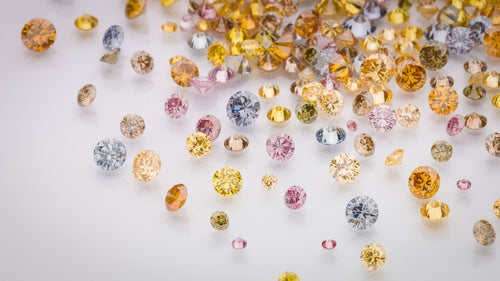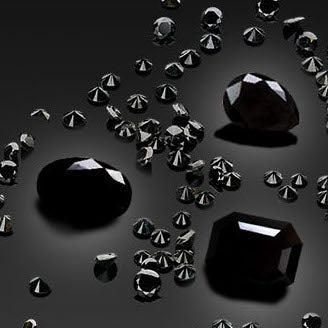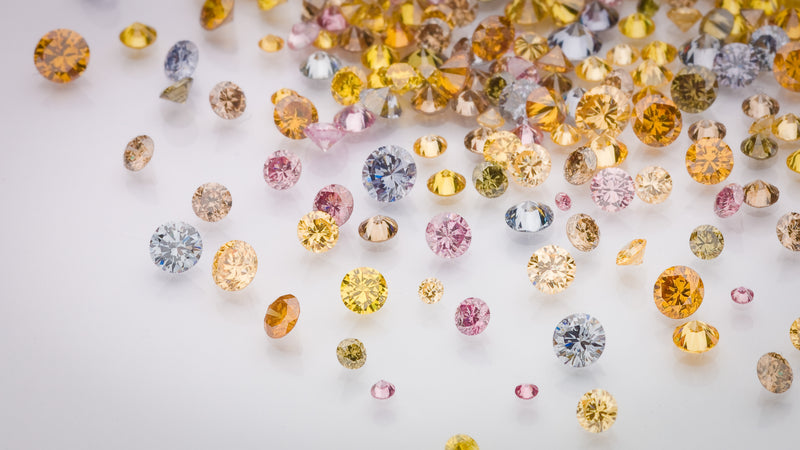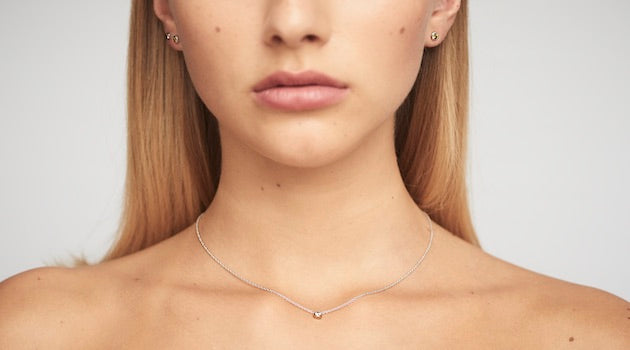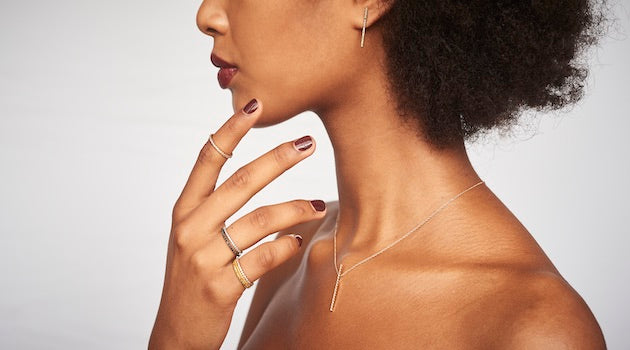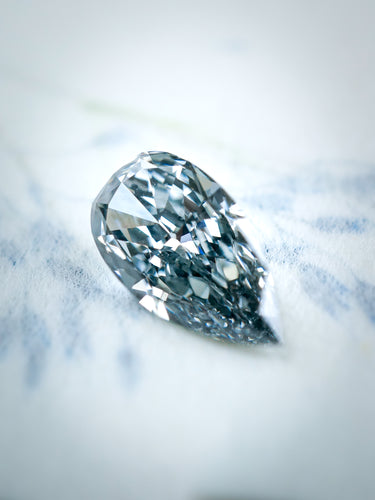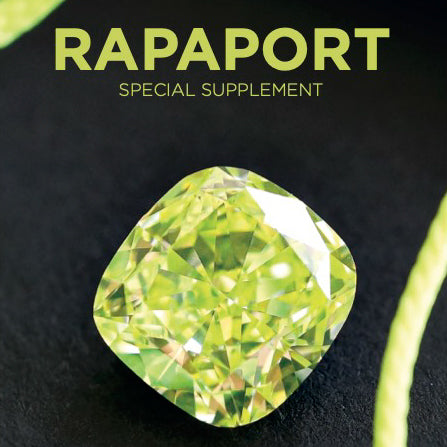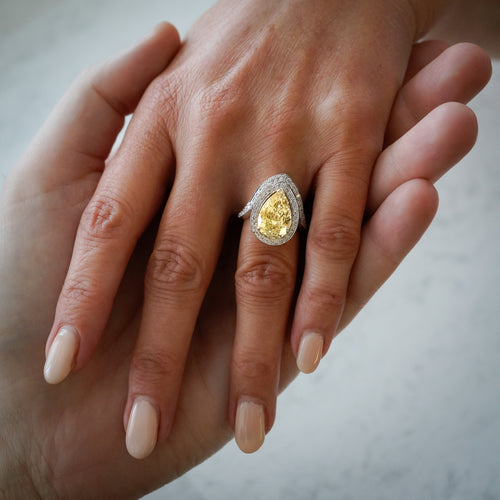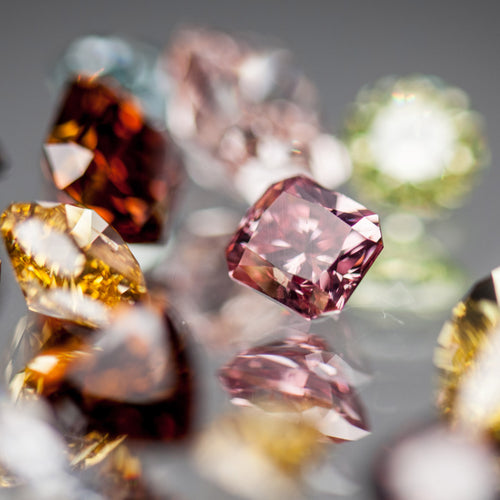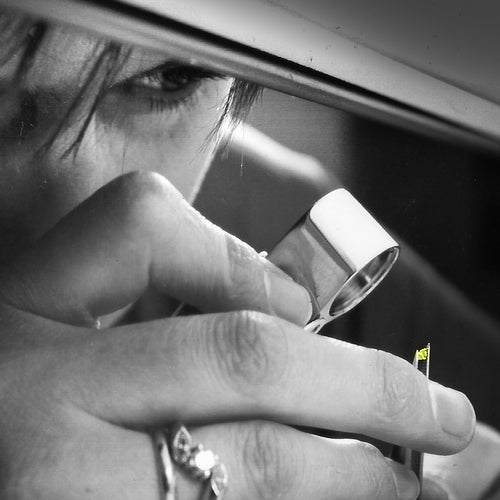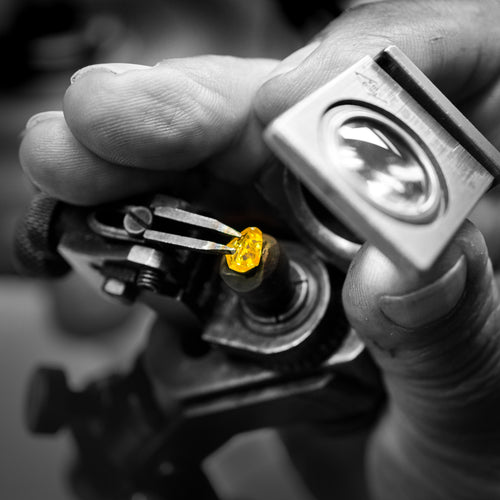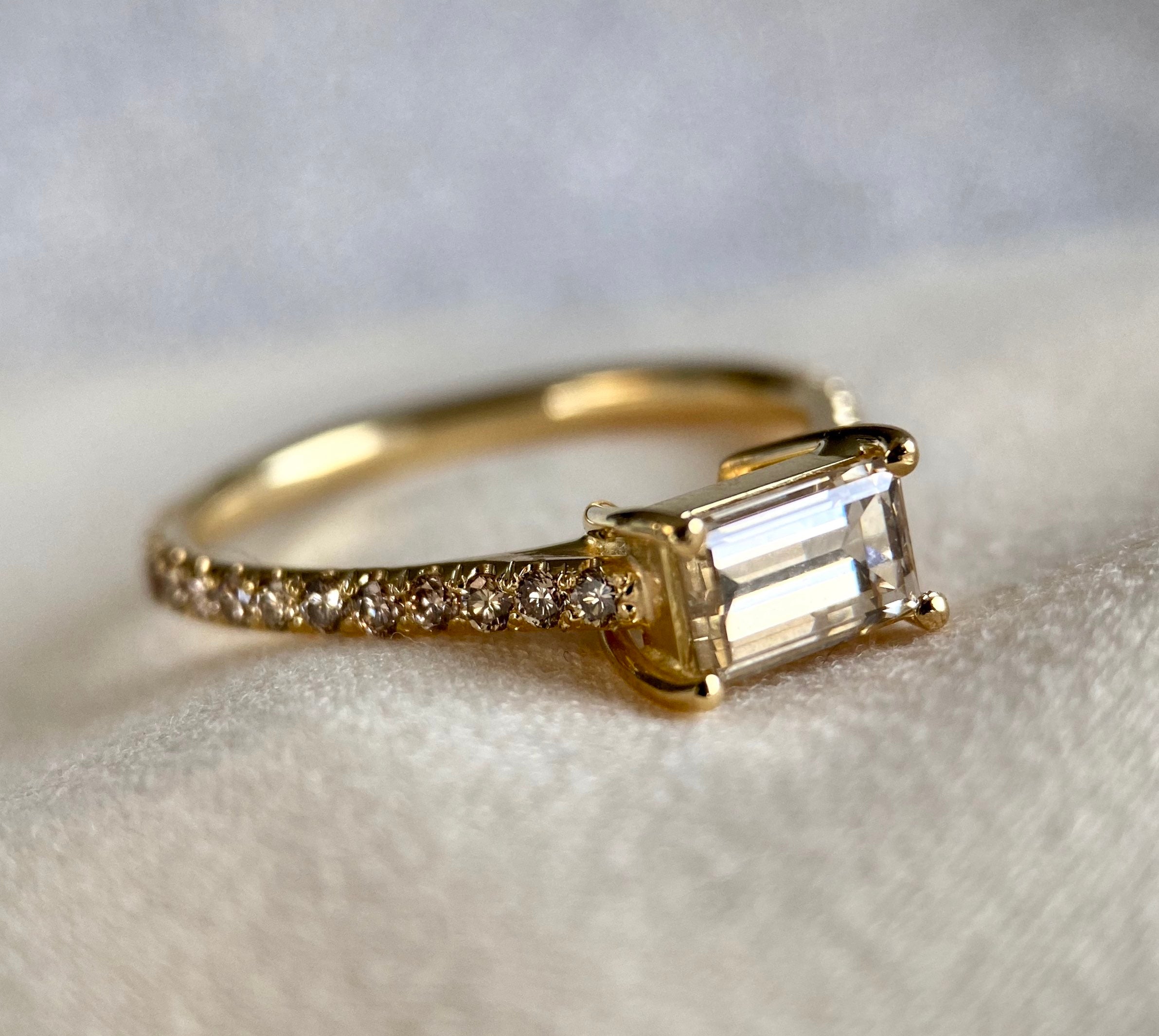


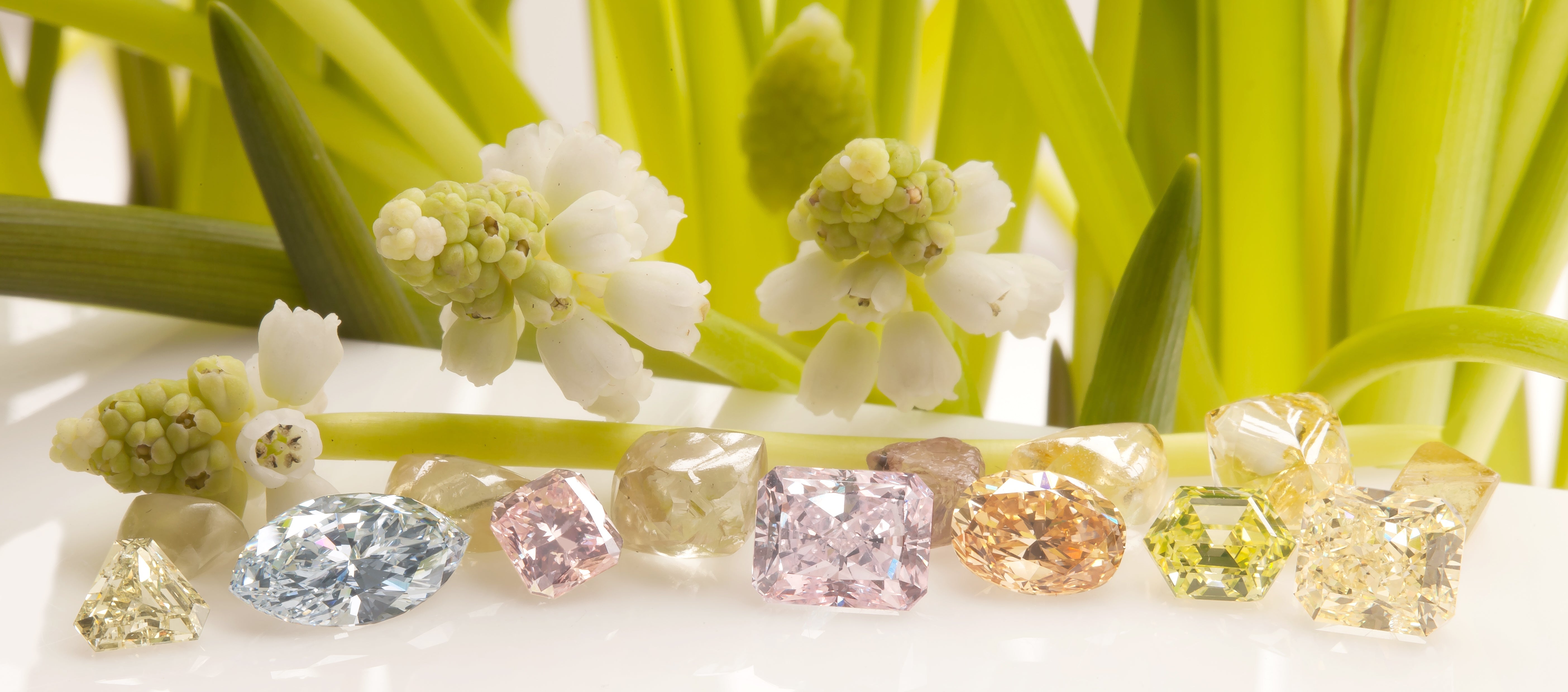

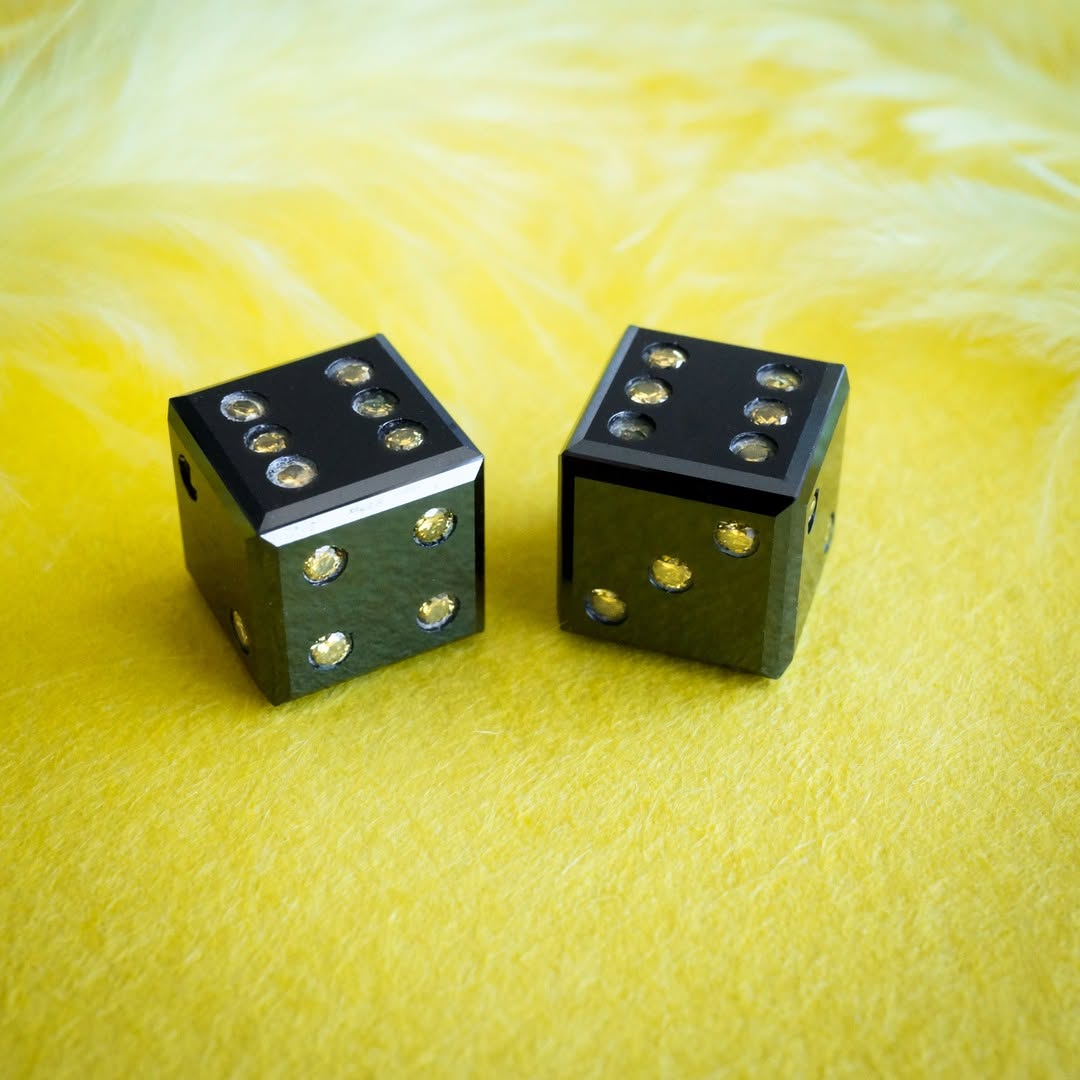
Where Do All the Colors in Diamonds Come From
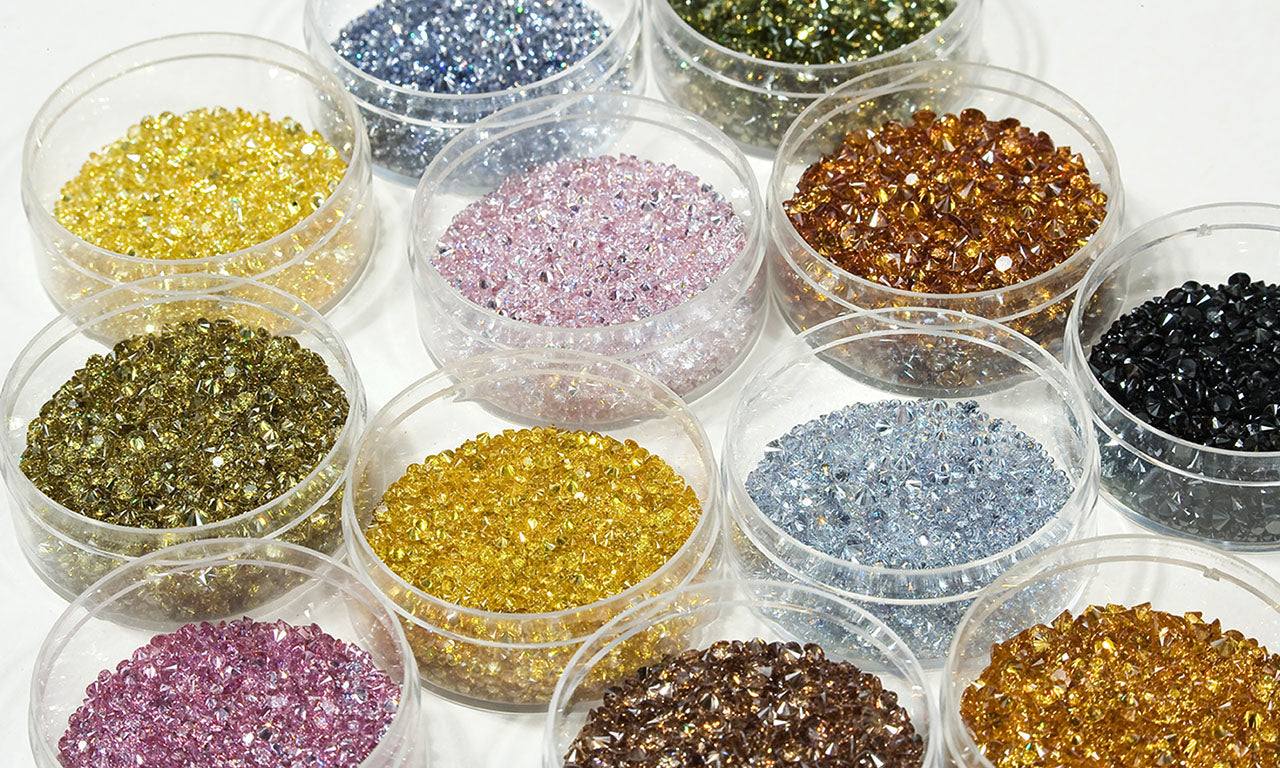
Whether colorless or colored, diamonds come from deep beneath the surface of the Earth and have undergone the turmoils of elemental forces for billions of years before rising up to the surface in Kimberlite or lamproite pipes.
But what makes colored diamonds even more exceptional is that very specific elements have to be gathered in order to create a colored stone. A few boron atoms, and you get a blue diamond, a bit more and you get an intense blue color. Add a bit of natural radiation to that mix (like in Guyana, for example) and you get a sublime turquoise tint.
Natural radiation during millions of years is the main cause in the green color of diamonds. Gamma rays displace the atoms from their normal position in the crystal lattice, which causes it to absorb magenta wavelengths. Of course, this radiation has disappeared and these diamonds are as harmless as they are rare.
As for the warm tones of yellow, orange and brown diamonds, they come from the presence of nitrogen atoms. The rarest color among them is orange: additionally to these atoms, it must have specific structural deformities.
Yes, colored diamonds are full of foreign atoms, imperfections and deformities. This is the case for the gorgeous pink, purple and red diamonds. Indeed, the pink and red tint in diamonds is believed to be due to distortions in the crystal lattice which cause what is called “graining”.
In their variety, color diamonds reflect nature’s infinite diversity and this is why the world of natural colored diamonds is so fascinating: no diamond specialist can say he has seen everything. As diamond dealers, we constantly marvel at stones whose color amazes us and we are happy to share this with you.
More from Langerman Diamonds:
